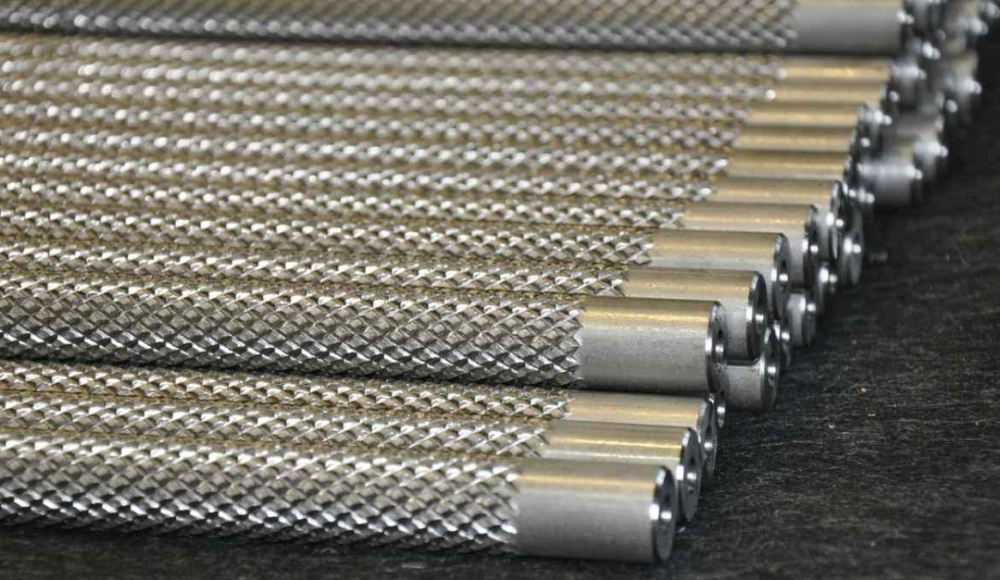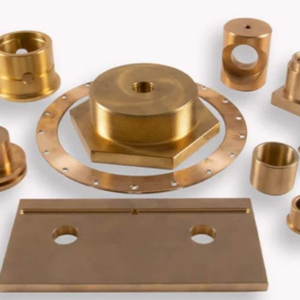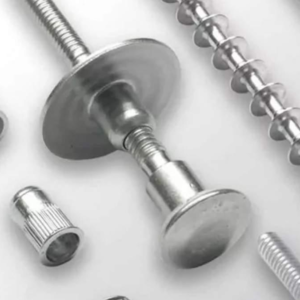Las industrias de mecanizado aplican diferentes procesos de acabado en piezas mecanizadas. Uno de ellos es el conocido como moleteado que se utiliza para conseguir acabados texturizados.. Las líneas de contorno generadas son únicas ya que forman crestas y valles en las piezas creadas..
Este artículo también define el moleteado., tipos de moleteado, y las imperfecciones habituales. Además, técnicas de moleteado, herramientas requeridas, y se discutirán pautas útiles para un moleteado óptimo..
¿Qué es el moleteado en la fabricación??
El moleteado es un acabado de superficies operación que crea patrones elevados o crestas recortadas en superficies de contacto. Esta técnica es muy aplicable cuando se utilizan tornos o herramientas manuales.. Los acabados texturizados hacen que la superficie sea rugosa para reducir el deslizamiento durante el uso.. Además, El moleteado se ve mejor que otros tipos de acabados lisos con ranuras y crestas.. Este proceso funciona como método de corte o prensado para mecanizado de remoción de material.. Las herramientas de moleteado presentan varios patrones., incluyendo líneas diagonales y rectas.
Tipos de técnicas de moleteado en la fabricación
Se utilizan diferentes técnicas de moleteado para producir texturas superficiales particulares en las piezas de trabajo..
1. Moleteado recto
El moleteado recto produce depresiones longitudinales en superficies que utilizan ruedas muy desgastadas., y producen líneas paralelas o diagonales. El método ayuda a lograr un mejor agarre y manejo en diferentes sectores.. Los beneficios del moleteado recto incluyen:
- Mejora estética: Los moleteados rectos contribuyen al diseño del producto., mejorar el atractivo. Estos patrones son adecuados para productos tubulares como tiradores o pomos en este caso.. Además, se aplican a artículos de lujo, por ejemplo instrumentos de escritura o joyas.
- Funcionalidad de agarre firme: El moleteado recto forma perfiles rugosos, que facilitan el manejo. Estos patrones crean una superficie rugosa que hace que el contacto de las manos con los objetos a manipular sea más seguro, minimizando así las posibilidades de deslizamiento..
2. Moleteado de diamante
El moleteado de diamante es viable para producir una serie de rugosidades en forma de diamante en la superficie de la pieza de trabajo.. La técnica ha cruzado líneas diagonales., que crean dos patrones de diamantes diferentes. Lograr tal acabado requiere ruedas con moleteados con diseño de diamante.. Los atributos únicos del moleteado de diamante incluyen.
- Aplicación decorativa: Las depresiones poco profundas en forma de diamante también son más atractivas estéticamente.. El segundo tipo de moleteado se utiliza en la producción de elementos como piezas de bicicletas., tripas delgadas, o pertenencias personales. El resultado de esto es que la apariencia del conjunto es hermosa y muy avanzada..
- Agarre mejorado: El moleteado de diamante circunferencial mejora en mayor medida el agarre en piezas de trabajo manuales. Existe una gran cantidad de puntos de contacto que existen entre la mano y la superficie., esto mejora la tracción. Como resultado, este acabado puede ser fácilmente manipulado por objetos.
3. Moleteado helicoidal
El moleteado helicoidal forma líneas diagonales en forma de espiral en las superficies.. Generalmente, Se realiza en piezas cilíndricas como es el caso de las roscas.. Los usos y beneficios típicos incluyen:
- Fines decorativos: El moleteado helicoidal se emplea específicamente con fines estéticos.. La técnica es muy adecuada para combinarla con el enchapado y el pulido para lograr una mejor estética del producto..
- Funcionalidad mejorada: La mayoría de los objetos redondos como perillas., ejes, y los mangos se benefician del moleteado helicoidal como técnica de mejora. Su diseño le permite tener un agarre firme cuando está en funcionamiento y durante la rotación..
- Formación de hilos: Esta técnica se aplica a productos cilíndricos y les fabrica hilos.. Cumple requisitos específicos de manera efectiva. Esto minimiza los procesos de subprocesamiento adicionales que normalmente consumen mucho tiempo.. Tal como, el proceso es efectivo y económico.
Tipos de herramientas moleteadas para acabado moleteado
Las herramientas generalmente se seleccionan dependiendo de las demandas particulares.. Algunas herramientas típicas utilizadas en el moleteado de metales incluyen:
1. Moletas
Las ruedas moleteadas son cruciales para el moleteado de metales.. Por lo general, están hechos de acero endurecido con dientes afilados y giran en direcciones adversas.. Las ruedas están montadas sobre una herramienta moleteadora., y se aplica presión a la pieza de trabajo giratoria.
2. Insertos moleteados
Los insertos moleteados son accesorios utilizados habitualmente en tornos.. Cada plaquita tiene un patrón de moleteado diferente según el tipo de acabado utilizado.. Está disponible en diferentes tamaños y formas.. Generalmente, Los insertos están fabricados de carburo metálico y acero de alta velocidad..
3. Matrices moleteadas
Los troqueles moleteados se utilizan en tornos de torreta y procesos CNC.. Los dos últimos tipos de troqueles se utilizan para producir patrones moleteados en una superficie cilíndrica.. Las herramientas de corte de acero rápido cuentan con ranuras que encajan en el perfil interno de la pieza de trabajo..
4. Herramientas de moleteado tipo empuje
Las herramientas moleteadoras de tipo empuje son instrumentos manuales para hacer patrones.. Estas herramientas suelen tener una moleta conectada a un mango.. Avanza a lo largo de la pieza de trabajo para dar la textura necesaria a la superficie de moleteado..
5. Herramientas de moleteado flotantes
Algunas herramientas son herramientas de moleteado flotantes que crean patrones en geometría compleja.. Diseñado para correr a lo largo del contorno de la pieza de trabajo., aseguran un moleteado eficiente y preciso. La precisión en el posicionamiento de las ruedas se realiza mediante brazos articulados o mecanismos accionados por resorte..
Desafíos encontrados en el mecanizado de componentes moleteados
Los componentes de agarre se utilizan para aplicaciones estéticas y prácticas en profesiones como la joyería., fabricación de muebles, automotor, y aviación. Sin embargo, Los fabricantes de productos normalmente enfrentan varios desafíos al moletear..
1. Tamaño inferior o superior
Los diámetros deseados de los patrones de moleteado son tan importantes para los fabricantes como cualquier otra especificación del producto.. Pueden ocurrir tamaños incorrectos cuando el patrón de moleteado es más pequeño de lo previsto.. El sobredimensionamiento ocurre cuando el patrón desarrollado va más allá del tamaño requerido.. Además, primeras configuraciones incorrectas, selección de herramienta incorrecta, y las altas presiones de trabajo a menudo pueden resultar en un sobredimensionamiento.
2. Daño superficial
Durante la fabricación de moletas, algunos materiales generalmente se rayan. Este daño a menudo surge cuando se usa alta presión sobre las herramientas o cuando se usan herramientas de moleteado viejas, lo que genera algún tipo de distorsión en la pieza de trabajo..
3. Desgaste de la herramienta
Las herramientas de moleteado no son uniformes.. Entonces, las herramientas pueden desgastarse con el tiempo. Defectos como áreas aplanadas y rebabas son evidencia del impacto del desgaste de la herramienta en el rendimiento de una herramienta, lo que resulta en una disminución de la eficiencia.. Estos problemas se ven agravados por su utilización constante afectando así la calidad.
4. Mala definición de patrón
Para moleteado de alta calidad, Los patrones deben ser claros., conciso, y bien definido. Porque, Lubricación inadecuada, elección de herramienta incorrecta, o las moletas dañadas pueden provocar un acabado borroso..
5. Marcas de castañeteo o vibración
Las vibraciones y las marcas de vibración son signos que generalmente parecen marcas aleatorias en las superficies del material que se experimentan en el proceso de moleteado.. Esto sucede debido a una presión incorrecta sobre las herramientas., rigidez insuficiente, y mal posicionamiento durante la instalación de la moleteadora.
Consejos para un moleteado eficaz en la fabricación
Analicemos algunos consejos generales para obtener el acabado moleteado adecuado en los componentes.:
1. Preparación adecuada de la pieza de trabajo
Al grabar, Es fundamental preparar muy bien la pieza de trabajo para conseguir resultados óptimos.. Porque cualquier pequeña imperfección o inclusión puede provocar que se produzca un moleteado deficiente.. Además, Limpiar y asegurar la pieza de trabajo a una dimensión precisa ayuda a evitar dimensiones excesivas o insuficientes antes de que comience la operación..
2. Seleccionar la herramienta moleteadora adecuada
Las herramientas de moleteado se pueden clasificar según la forma de los dientes., el tono, o el diseño utilizado. Para un procesamiento exitoso del material, es necesario seleccionar la herramienta que será adecuada en términos de dureza y rugosidad del material tratado..
3. Aplicar lubricación
Se debe tener en cuenta el tipo de fluidos de corte o lubricantes que se utilizarán al realizar el moleteado.. Una lubricación correcta reduce el calor y la fricción y mejora la rugosidad de la superficie del acabado moleteado dependiendo del material sobre el que se esté trabajando..
4. Control de la velocidad de corte óptima
Para minimizar el desgaste de la herramienta y garantizar la formación adecuada de viruta., es crucial establecer la velocidad de corte correcta. Identificar la velocidad adecuada del torno según el tipo de metal utilizado para el moleteado.. Por lo tanto, Es esencial seguir las pautas del fabricante para materiales específicos..
5. Presión adecuada en la superficie de la herramienta
Una presión más alta puede afectar negativamente a la pieza de trabajo. Además, un poco de presión puede dar como resultado patrones poco profundos en la parte deseada. El control de la presión es vital durante el moleteado y debe alinearse con el material y el tipo de herramienta..
Conclusión
para resumir, La información del artículo le permite distinguir diferentes tipos de herramientas de moleteado., patrones, y algunos problemas generales en las operaciones.. Este conocimiento le ayuda a tomar mejores decisiones para sus proyectos por su cuenta.. Sin embargo, colaborar con una empresa de fabricación confiable puede generar resultados rentables. Cuando se trata de moletear, Tops Precision se encuentra entre los mejores a los que recurrir. Si requiere acabados moleteados o cualquier otro servicio post-acabado, Tapas de precisión es la solución perfecta.



